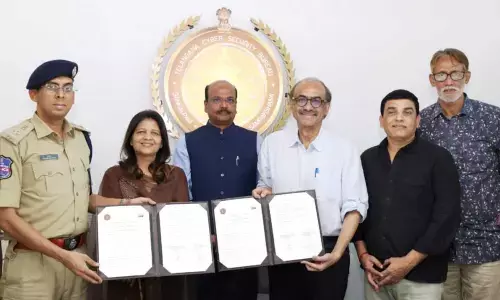Yoga for fat burning

Globally, more than one in 10 humans are obese. There are a great many health risks associated with obesity such as hypertension, Type 2 diabetes, heart disease, stroke, osteoarthritis, and mental illness. Take control of your own health, making it top priority.
Globally, more than one in 10 humans are obese. There are a great many health risks associated with obesity such as hypertension, Type 2 diabetes, heart disease, stroke, osteoarthritis, and mental illness. Take control of your own health, making it top priority. If weight loss is your goal, start by setting up small, and easy-to-attain goals for yourself. Yoga with its many facets of asanas, pranayama and meditation can all help you to achieve your goals of a fit body and determined mind. Begin a simple routine that combines the practice of yoga asanas, followed by pranayama and meditation. Allow these elements to work on your physical and mental body to positively affect your confidence and morale.
Surya Namaskar: With just 12 counts for each side (left and right), making it a total of 24 counts, this is the world's most popular and effective method. It uses the whole body be it back or forward bending, core strengthening etc. We can employ the Sun Salutation technique and practice it to begin our tryst with Yoga to reach our objectives of fitness and good health.
Benefits of Surya Namaskar:
l It works as a holistic body workout to maintain health with an added spiritual touch.
l Balances and stimulates all the organs in the body, including endocrine, respiratory, etc
l Creates good energy in all of the body parts
l The immune system gets stronger
l Helps you build power and strength in your body
l The whole nervous system is awakened and activated.
l Enhances your analytical and reasoning skills
l By removing carbon dioxide and replacing it with fresh oxygen, there is an increase in the flow of oxygenated blood to the brain, resulting in better mental clarity.
l Surya Namaskar involves an alternate flexing of the spinal column backwards and forwards. The spine and muscles of the back are exercised in a way which presses and gently massages the kidneys.
l Enhances your analytical and reasoning skills
Steps:
1. Pranamasana
2. HasthaUthanasana
3. Padahasthasana
4. Ashwasanchalansana
5. Santhulanasana
6. AshtangaPranam
7. Bhujangasana
8. Adomukhishvanasana
9. Ashwasanchalansana
10. Padahasthasana
11. HasthaUthanasana
12. Pranamasana
Santolanasana – Plank Pose
Formation of the posture
l Lie on your stomach
l Place your palms under your shoulders and lift your upper body, pelvis and knees up
l Grip the floor with toes and keep the knees straight
l Ensure that your knees, pelvis and spine are aligned
l Your wrists must be placed exactly below your shoulders with your arms kept straight
l Hold the final posture for a while
Breathing Methodology
Inhale as you lift your body off the floor. Inhale and exhale normally if you hold the asana for too long.
Chakrasana – Wheel Pose
Formation of the Posture
l Lie down on your back
l Fold your legs at your knees and ensure that your feet are placed firmly on the floor
l Bend your arms at the elbows with your palms facing the sky. Rotate your arms at the shoulders and place your palms on the floor on either side beside your head
l Inhale, put pressure on your palms and legs and lift your entire body up to form an arch
l Look back and relax your neck as you allow your head to fall gently behind
l Your body weight should be evenly distributed between your four limbs
l Hold the asana for a while
Breathing Methodology
Inhale while lifting the body up
Naukasana – Boat Pose
Formation of the Posture:
l Lie down on your back.
l Bring your upper body 45° off the floor.
l Pivot your body weight on your hips and lift your legs 45° off the floor.
l Your toes must be aligned with your eyes
l Try to prevent a bend in the knees.
l Keep your arms parallel to the ground and pointing forward.
l Tighten your abdominal muscles.
l Straighten your back.
Breathing Methodology
l Inhale before raising the upper body and legs.
l Hold the breath while holding the asana.
l Exhale as you lie down
Pranayama Techniques
Kapalbhati Pranayama: Inhale normally and focus on exhaling with a short, rhythmic and forceful breath. You can use your stomach to forcefully expel all the air from the diaphragm and lungs by compressing it. Inhalation should happen automatically while you decompress your stomach. Kapalbhathi is best done on an empty stomach before breakfast in the mornings. It can also be done 2 hours after your last meal. Preferably done on empty stomach in the mornings; or 2 hours after last meal. Practise upto 20 cycles or 5-10mins.
Khand Pranayama: Khandimplies divide or split. This Pranayama is about splitting the breath into two parts. Inhale twice and exhale twice without stopping. This is DwiKhand Pranayama. Practise upto 20 cycles or 5-10mins.
Anulom Vilom: In Sanskrit 'Anuloma' means natural order and 'Viloma' means 'going against'. Using your right thumb to close your right nostril, first inhale from your left nostril and closing your left nostril with your right hand's index finger, exhale from right nostril. Repeating this again makes it one full cycle. Practise upto 20 cycles or 5-10mins.
Start with 15- 20 minutes of yoga practice for a minimum of three times a week for a slimmer waistline and a healthier life. Through the techniques of meditation, asanas and pranayama; you can align your body and mind to your weight management goals. Hold each asana for 20-30 seconds and increase the number of sets as you become more comfortable with the postures. Weigh yourself or measure the amount of fat loss achieved every fortnight or monthly to stay motivated and inspired on your path to good health!
(The writer is a philanthropist, spiritual master, lifestyle coach, yoga-preneur and author)















